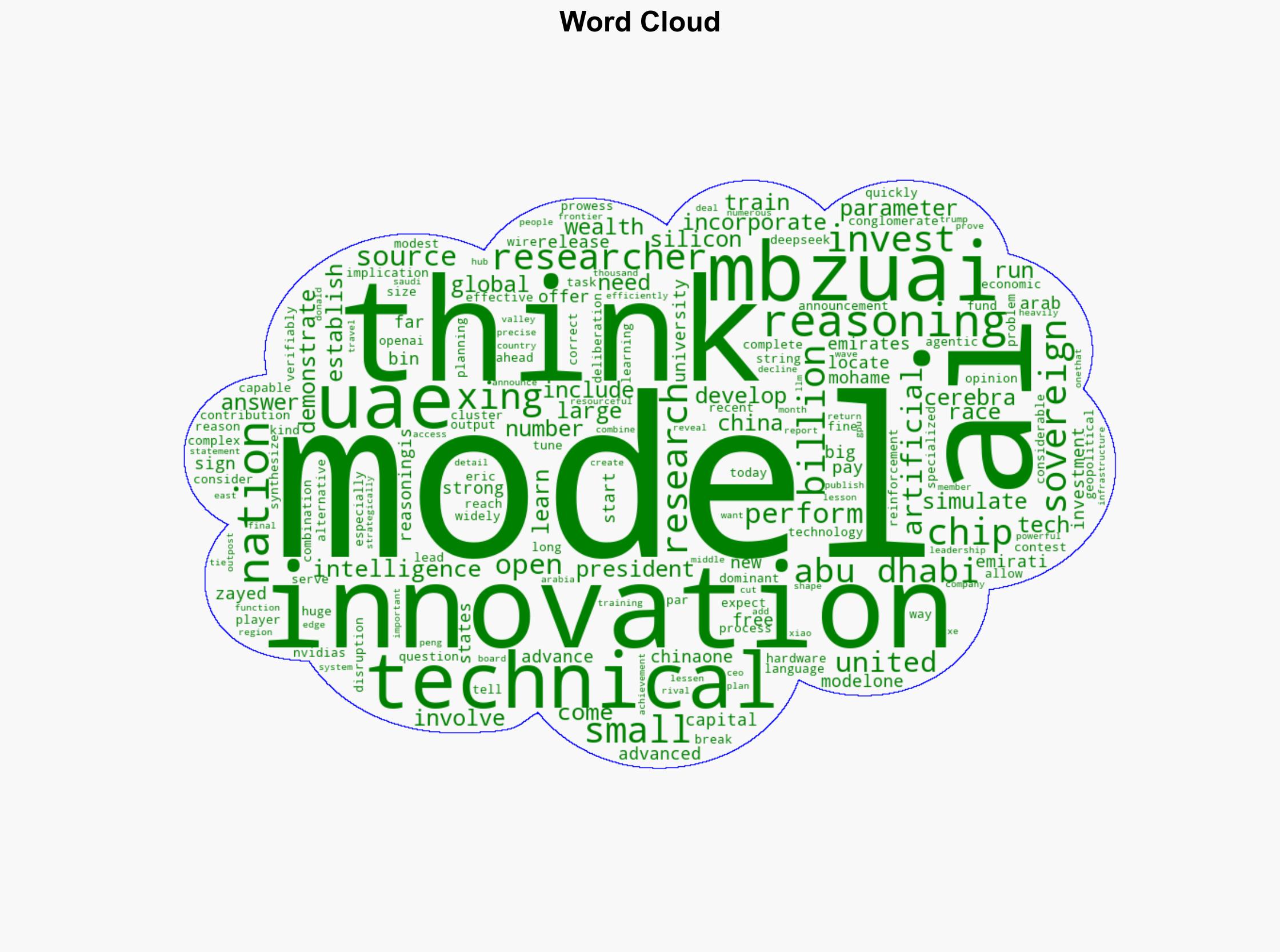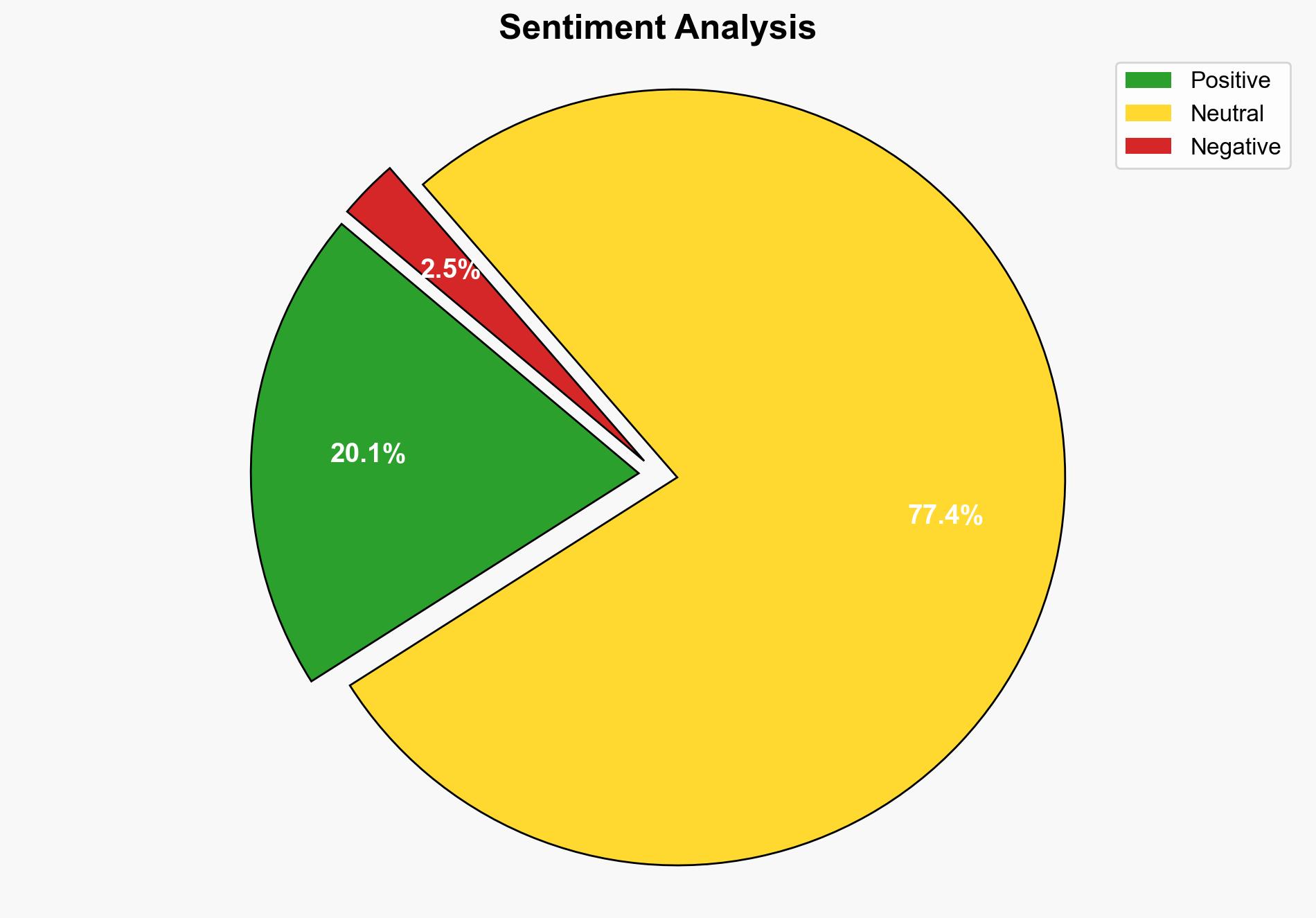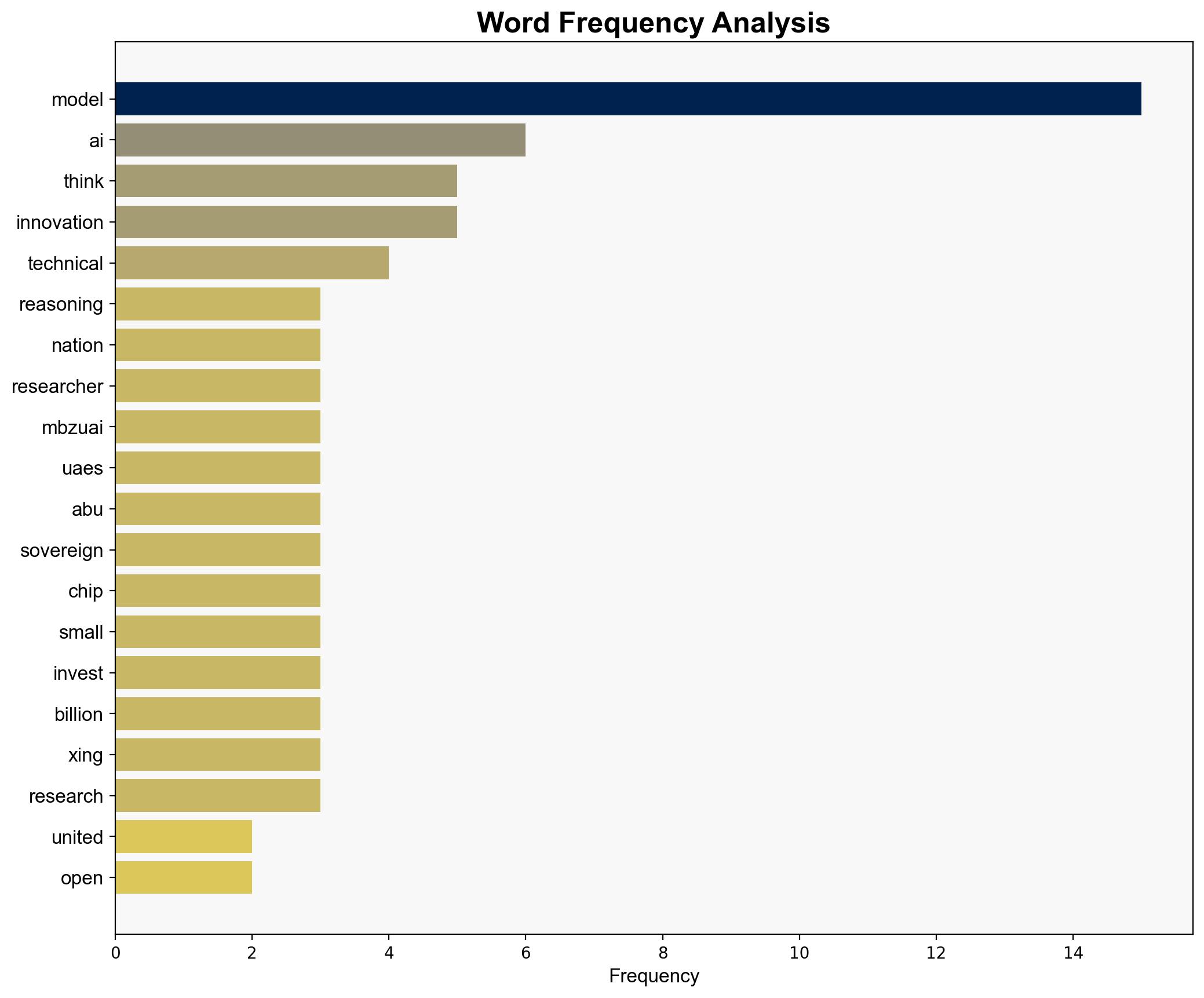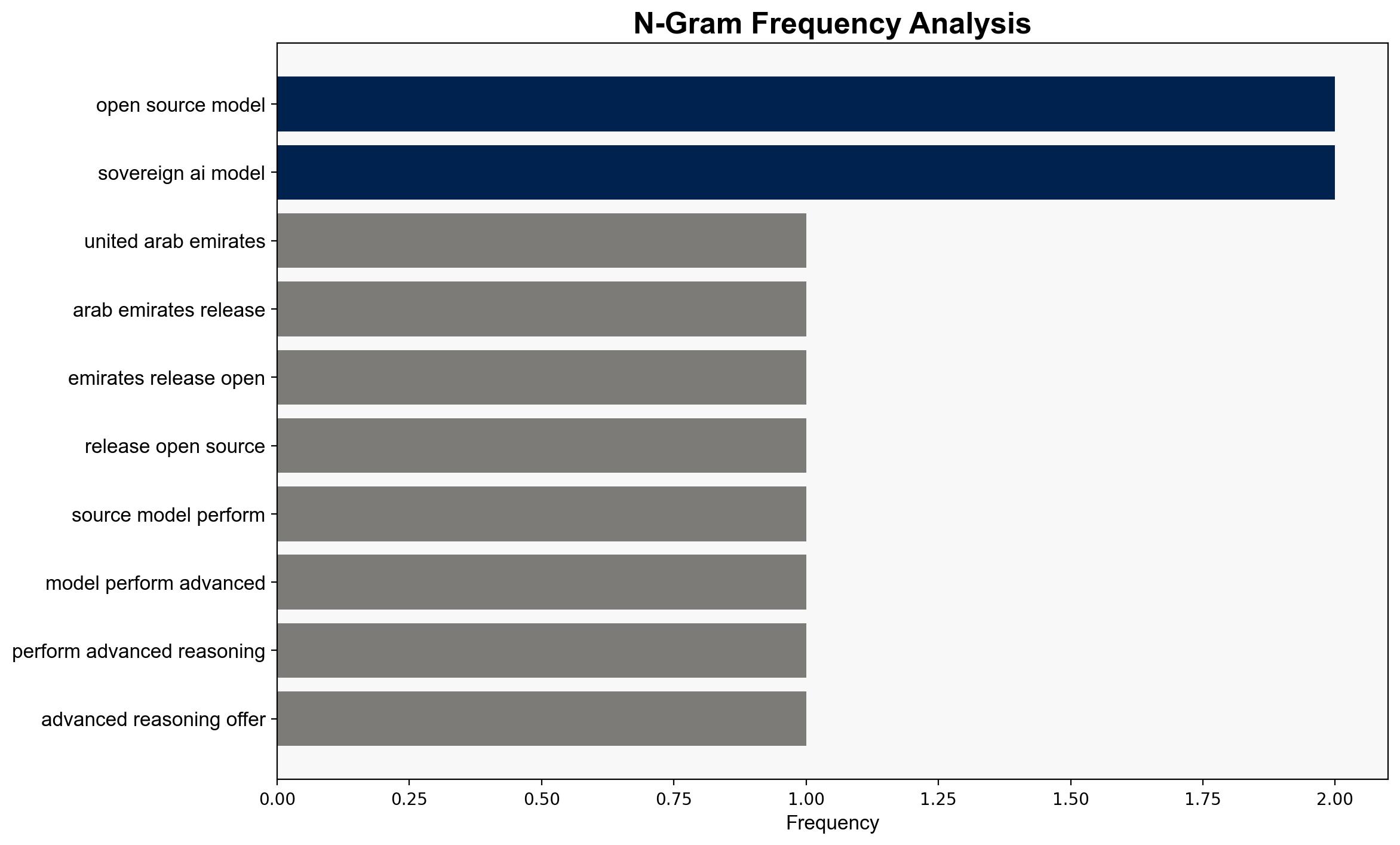The United Arab Emirates Releases a Tiny But Powerful AI Model – Wired
Published on: 2025-09-09
Intelligence Report: The United Arab Emirates Releases a Tiny But Powerful AI Model – Wired
1. BLUF (Bottom Line Up Front)
The UAE’s release of a compact yet powerful AI model signifies a strategic move to position itself as a leader in AI innovation. The most supported hypothesis is that the UAE aims to establish itself as a key player in the global AI race, leveraging its wealth and strategic investments. Confidence in this assessment is moderate, given the geopolitical implications and the nascent stage of the technology. Recommended action includes monitoring the UAE’s AI developments and assessing potential impacts on global AI dynamics.
2. Competing Hypotheses
1. **Hypothesis A**: The UAE’s AI model release is primarily a demonstration of technological prowess aimed at enhancing its global standing in AI innovation and attracting international collaborations.
2. **Hypothesis B**: The initiative is a strategic move to reduce dependency on foreign AI technologies, particularly from dominant players like the US and China, and to secure technological sovereignty.
Using ACH 2.0, Hypothesis A is better supported due to the UAE’s history of strategic investments in technology and its efforts to establish itself as a hub for innovation. The emphasis on open-source development and international collaboration aligns with this hypothesis.
3. Key Assumptions and Red Flags
– **Assumptions**: It is assumed that the UAE has the capability and infrastructure to support advanced AI development. Another assumption is that international collaborations will remain viable despite geopolitical tensions.
– **Red Flags**: Potential overestimation of the model’s capabilities and the impact of geopolitical shifts on international partnerships. The reliance on foreign hardware, such as Cerebras chips, could pose a supply chain risk.
4. Implications and Strategic Risks
The UAE’s AI advancements could shift regional power dynamics, potentially leading to increased competition in AI capabilities among Middle Eastern nations. The move might provoke responses from global AI leaders, influencing international AI policy and collaboration frameworks. Cybersecurity risks could escalate as AI technologies become more sophisticated and widespread.
5. Recommendations and Outlook
- Monitor the UAE’s AI developments and partnerships to anticipate shifts in global AI dynamics.
- Encourage dialogue and collaboration with the UAE to ensure alignment with international AI standards and ethics.
- Scenario Projections:
- Best Case: The UAE’s AI model fosters international collaboration and innovation, enhancing global AI capabilities.
- Worst Case: Geopolitical tensions lead to isolation and restricted access to critical AI technologies.
- Most Likely: The UAE continues to develop its AI capabilities, influencing regional and global AI strategies.
6. Key Individuals and Entities
– Mohamed bin Zayed University of Artificial Intelligence (MBZUAI)
– Eric Xing
– Peng Xiao
7. Thematic Tags
national security threats, cybersecurity, AI innovation, geopolitical strategy, Middle East technology investments




